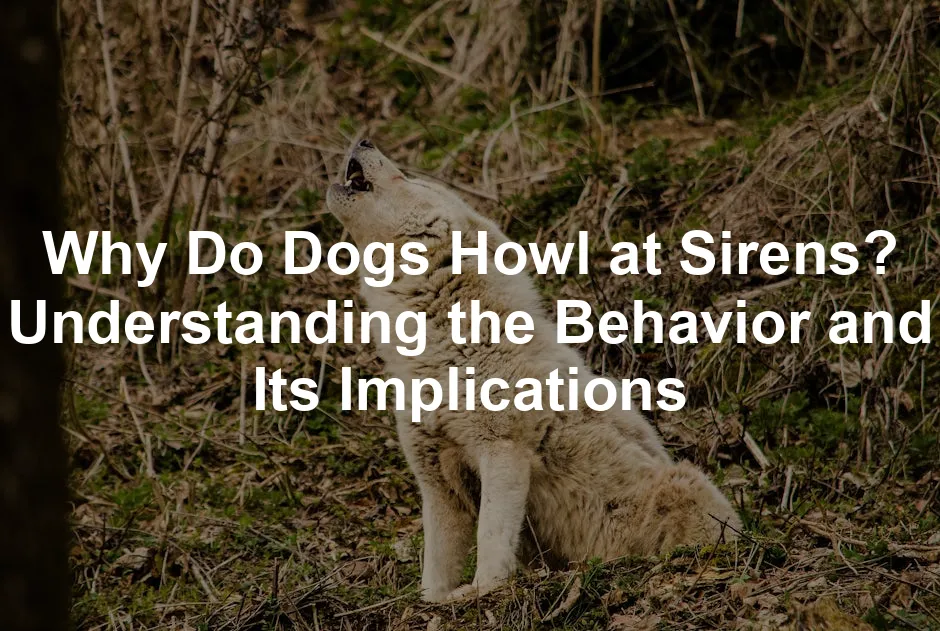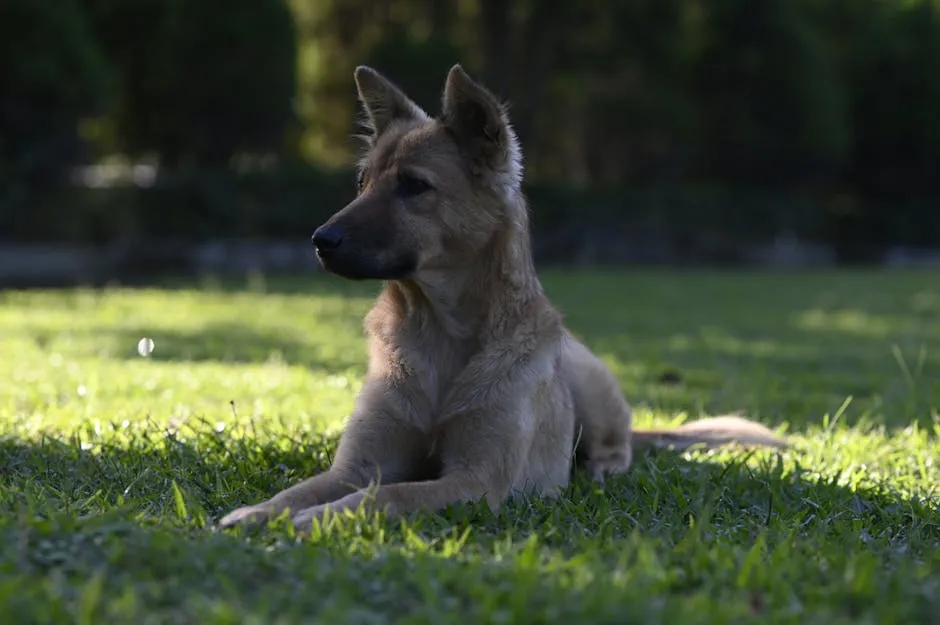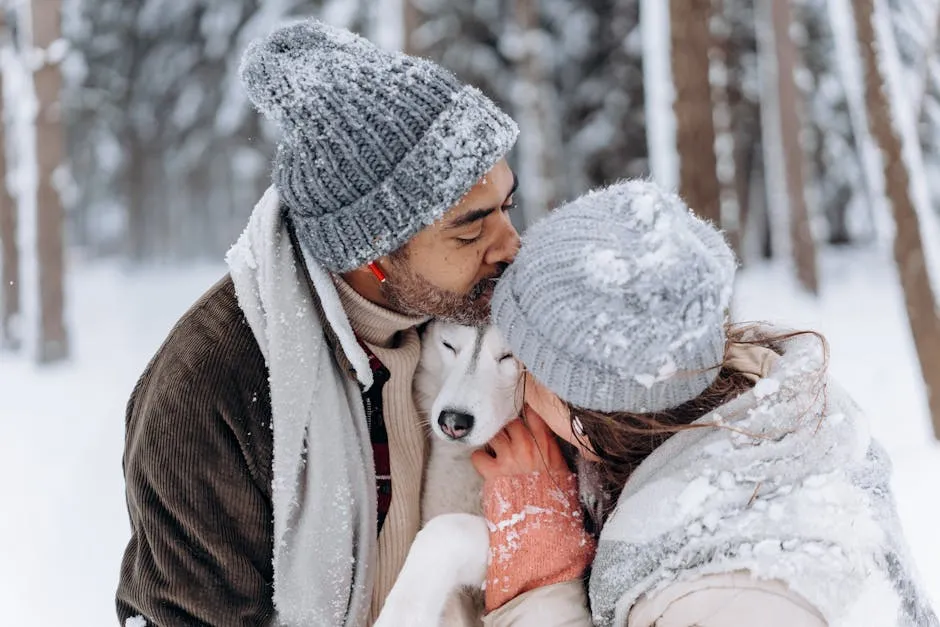
Why Do Dogs Howl at Sirens? Understanding the Behavior and Its Implications
Introduction
Have you ever noticed your dog howling at sirens? This behavior might seem puzzling at first. Understanding why dogs react this way is essential for every dog owner. This article aims to explore the reasons behind this vocalization and offers guidance for managing it effectively.
Speaking of managing your dog’s behavior, a great way to start is with a solid foundation in training. Consider picking up a Dog Training Book: “The Art of Raising a Puppy”. It’s filled with tips and tricks that can help you understand your furry friend’s needs and behaviors, especially when it comes to those pesky howls!

Summary and Overview
Dogs howl at sirens for various reasons. Instinctual responses and social behaviors play significant roles in this phenomenon. In this article, we will cover the main reasons why dogs howl at sirens, including their evolutionary history. Understanding this behavior is vital for effective dog training and enhancing interactions between you and your furry friend.
And while you’re enhancing your dog’s training, why not make it enjoyable for both of you? A Dog Training Clicker can be a fantastic tool to reinforce positive behavior and make training sessions fun. Plus, your dog will love the treats that come after the click!

Why Do Dogs Howl at Sirens?
Ancestral Communication
Dogs have inherited many traits from their wolf ancestors. In the wild, wolves howl to communicate with their pack members. This ancient form of communication serves to locate one another over vast distances. When dogs hear a siren, they may interpret it as another dog’s howl. This response is instinctual and deeply rooted in their evolutionary background.
Dogs possess a keen sense of hearing. They can detect higher frequencies than humans. Therefore, when they hear the high-pitched sound of a siren, it may trigger their instinct to respond. By howling, they might be signaling, “I hear you!” to what they perceive as a distant canine call. This instinctual behavior is a fascinating link to their wild heritage. Observing your dog’s reaction to sirens can be enlightening. Notice whether they seem curious or anxious. Understanding this instinctive response can help you appreciate their unique communication style.

Response to Stimuli
Dogs often react strongly to high-pitched noises, including sirens. Various sounds can trigger howling, such as emergency vehicle sirens, alarms, or even certain musical notes. The intensity of a dog’s reaction can vary by breed. Some dogs are more sensitive to sounds than others, often influenced by their breed characteristics.
For instance, breeds like Beagles and Huskies are known for their vocal tendencies. These dogs are more likely to howl at sirens compared to less vocal breeds. The environment also impacts how dogs respond. A dog raised in a bustling city might react differently to sirens than one from a quiet rural area. To better understand your dog’s behavior, try exposing them to various high-pitched sounds. Watch how they react to each noise. This simple exercise can provide insight into their unique sensitivities and help you manage their responses effectively.

And while we’re talking about Beagles, have you thought about using a Dog Puzzle Toy? It’s a great way to keep their minds engaged and can help reduce anxiety when they hear those pesky sirens!
Protective Instinct
Dogs have a natural protective instinct. When they hear a siren, they might perceive it as a potential threat. This is especially true for breeds that are more alert and watchful. Howling becomes their way of sounding the alarm. It’s like saying, “Hey, something unusual is happening!”
This behavior serves a vital role in family dynamics. Your dog sees you as part of their pack. By howling, they aim to alert you to perceived dangers. This action can strengthen the bond between you and your furry friend. It shows their commitment to keeping you safe.

To encourage this protective behavior positively, acknowledge your dog when they howl at sirens. Use praise or treats to reinforce their instincts. This will help them understand that you appreciate their efforts to protect you. Recognizing their protective nature fosters a stronger connection between you and your loyal companion.
Social Communication
Howling isn’t just a solo act; it can be a form of social bonding among dogs. When one dog howls, others may join in, creating a chorus of sounds. This phenomenon reflects their pack behavior and social nature. It’s their way of communicating and connecting with one another.
Social facilitation plays a crucial role here. If your dog hears another dog howl, it may respond by howling too. This behavior is rooted in their instinct to maintain social connections. It’s like a group of friends chatting away, enjoying each other’s company.

To observe this social behavior, consider organizing playdates for your dog. Watching them interact with other dogs can be enlightening. You’ll see how their howling becomes a fun, social activity. These gatherings can enhance their social skills and allow them to express themselves.
Fear of Loud Noises
Loud noises, like sirens, can trigger anxiety in dogs. For many, these sounds are startling and unpredictable. When frightened, dogs might howl as a response to their fear. This behavior is often linked to noise phobias, which can be quite common.
Signs of fear include pacing, panting, or hiding. If your dog exhibits any of these behaviors during loud noises, they may be anxious. Understanding these signs helps you identify when your pup needs support. Addressing their fear is essential for their well-being.

To assist anxious dogs, consider consulting a veterinarian. They can provide guidance and strategies to help your furry friend cope with their fears. Implementing techniques like gradual exposure to loud noises can also lessen their anxiety over time. This approach builds their confidence and helps them feel secure in their environment.
If you’re looking for additional support, consider a Dog Calming Music Playlist CD. It can create a soothing atmosphere that helps mask those startling sounds!
Breed Predisposition
Certain dog breeds are naturally more prone to howling at sirens. Breeds like Beagles, Huskies, and Bloodhounds are known for their vocalization tendencies. These breeds have a closer genetic link to wolves, who howl as a primary form of communication. This trait can manifest in howling at high-pitched sounds like sirens.
Genetic factors play a significant role in these vocalization tendencies. For example, breeds developed for hunting often have stronger instincts to vocalize. However, not every dog within a breed will behave the same way. Individual variability can arise from their upbringing, training, and socialization.

Understanding breed characteristics can provide insight into your dog’s behavior. Do some research on your dog’s breed to learn more about their unique traits. This knowledge can help you better manage their vocalizations and behaviors over time.
And if you’re curious about your dog’s genetics, why not try a Dog DNA Test Kit? It could provide some fascinating insights into your pup’s ancestry and behavioral predispositions!

Attention-Seeking Behavior
Dogs often howl to grab their owner’s attention. This behavior may stem from a learned response where howling leads to interaction, whether positive or negative. When a dog howls and receives attention, they associate the sound with getting what they want.
Reinforcement plays a key role in this behavior. If a dog howls and gets petted or spoken to, they may continue the behavior to elicit the same response. On the flip side, ignoring the howling can help reduce it. Instead, redirect their focus with toys or activities.

For a more effective approach, consider using positive reinforcement techniques. Reward your dog for being quiet instead of reacting to the howling. This encourages them to find alternative ways to gain your attention. By fostering good habits, you can create a more peaceful environment for both you and your furry friend.
And speaking of fostering good habits, you might want to check out a Dog Treats for Training. They’ll make rewarding your pup for good behavior a lot more enticing!

Creating a Calming Environment
Loud noises, like sirens, can be stressful for dogs. To help your furry friend feel safe, consider creating a calming environment. One effective method is to use noise-reducing products. These can muffle loud sounds, making your dog feel more secure during chaotic moments.
Calming music or sound machines can also work wonders. Playing soothing tunes can distract your pup from outside noise. There are even playlists specifically designed for dogs, promoting relaxation and comfort.

Designing a safe space for your dog is crucial. Create a cozy area with their favorite bed or blanket, away from windows. This retreat can serve as a sanctuary during loud events.
If your dog struggles with anxiety, consider trying calming products like Dog Anxiety Wrap or a Pheromone Diffuser for Dogs. These can help ease their stress levels and provide a sense of security.

By implementing these techniques, you can create a peaceful environment for your dog during loud noises. Take the time to explore calming products tailored for anxious dogs to find what works best for your pup.
Understanding why dogs howl at sirens can enhance your relationship with your pet. why do dogs howl at sirens
FAQs
How can I train my dog not to howl at sirens?
Positive reinforcement and desensitization techniques can help train your dog to remain calm. Start by rewarding your dog for being quiet when a siren passes. Use treats and praise to reinforce this behavior. Gradually expose your dog to recorded siren sounds at a low volume. This helps them associate the sound with positive experiences. Over time, increase the volume and continue rewarding calm behavior. Consistency is key, so practice regularly. Remember, patience is essential in dog training.
Are some breeds more prone to howling?
Yes, certain breeds like Huskies and Beagles are often more vocal and prone to howling. These breeds have a closer genetic connection to wolves, which naturally howl as a form of communication. Their vocalization tendencies can be quite pronounced. For instance, Beagles are known for their distinct baying, while Huskies often join in with howling. Even within these breeds, individual personalities can vary. Researching your dog’s breed can provide insight into their vocal behaviors.
Do sirens hurt a dog’s ears?
Generally, sirens do not hurt dogs’ ears, but some dogs may be sensitive to loud noises. Dogs have a wider hearing range than humans, making them more susceptible to high-pitched sounds. While the noise might not cause pain, it can be startling. If your dog shows signs of distress, like hiding or shaking, they may have noise sensitivity. Observing your dog’s reactions can help you understand their comfort levels with loud sounds.
What should I do if my dog howls excessively?
If howling is excessive, consider consulting a professional trainer or behaviorist for help. They can offer tailored strategies to address the behavior effectively. Identifying triggers for the howling is crucial. Keep a journal to note when your dog howls to find patterns. In some cases, it may be linked to anxiety or boredom. Professional guidance can lead to effective solutions and a happier environment for both you and your dog.
Is howling a sign of distress?
While howling can indicate distress, it often serves as a form of communication; observe body language. Dogs may howl to alert you to a perceived threat or to express excitement. Pay attention to their overall demeanor. If your dog appears anxious or fearful while howling, it may be a sign of distress. However, if they are relaxed and playful, howling could simply be their way of joining in the fun. Understanding your dog’s body language is vital for interpreting their vocalizations.
Please let us know what you think about our content by leaving a comment down below!
Thank you for reading till here 🙂
All images from Pexels




